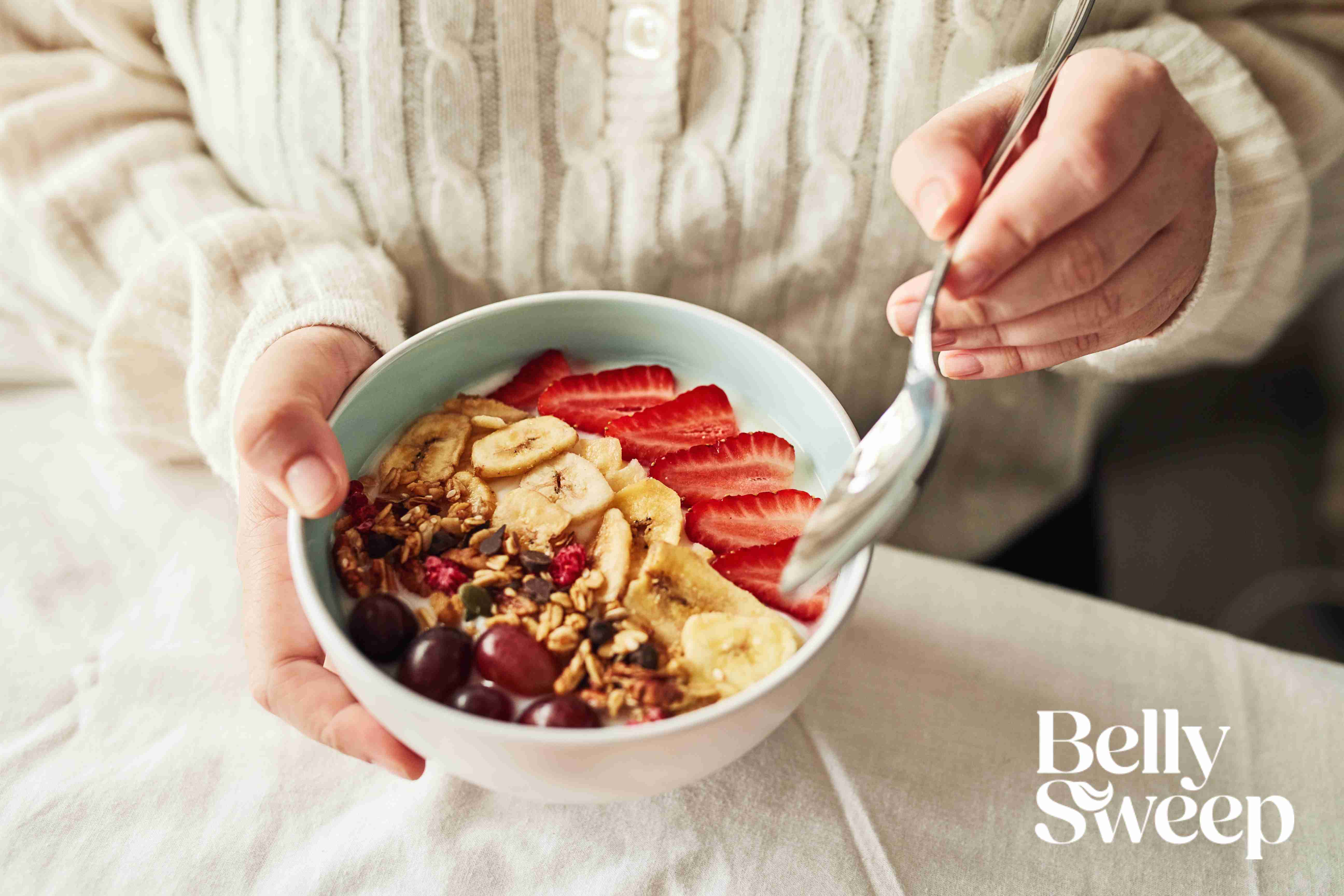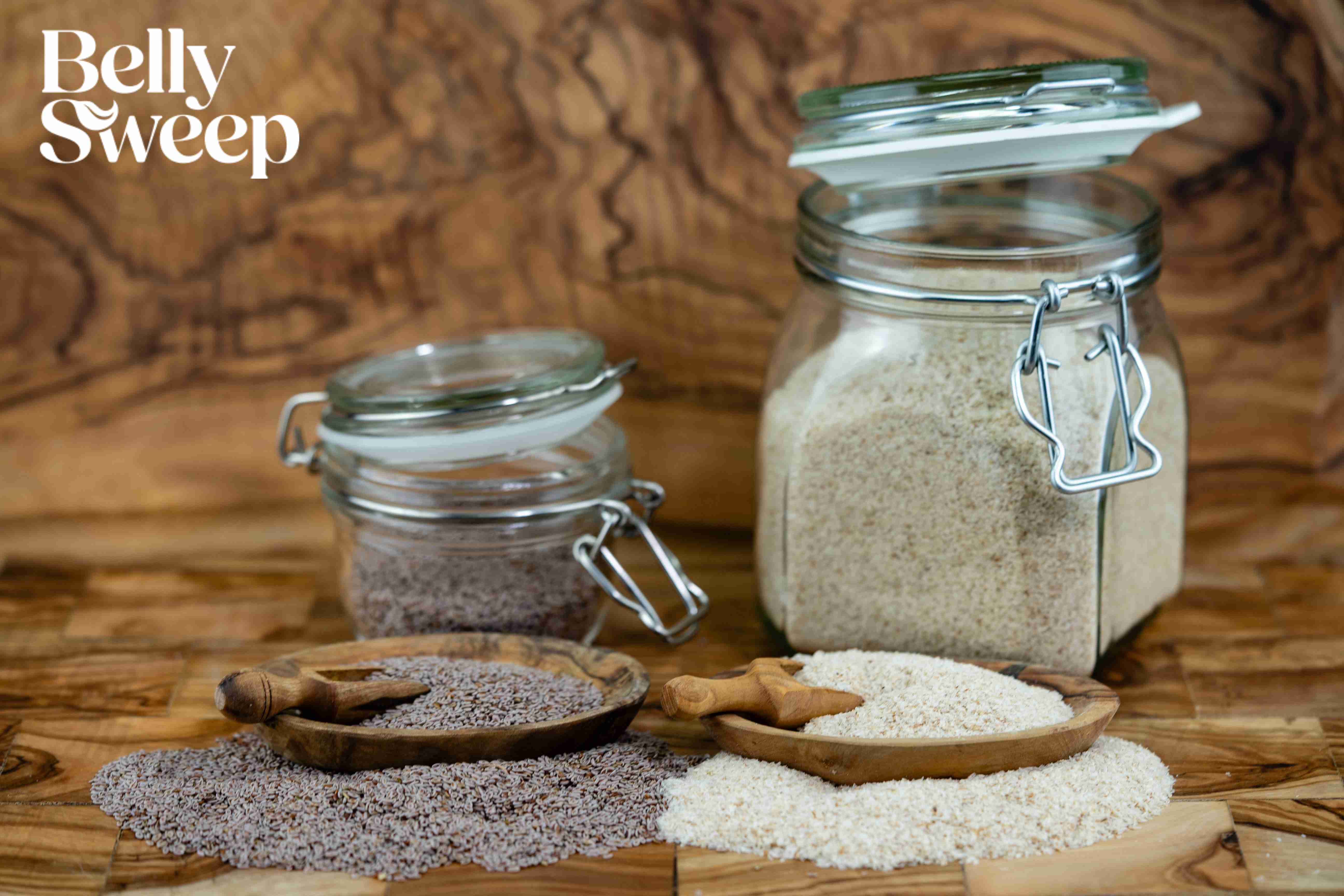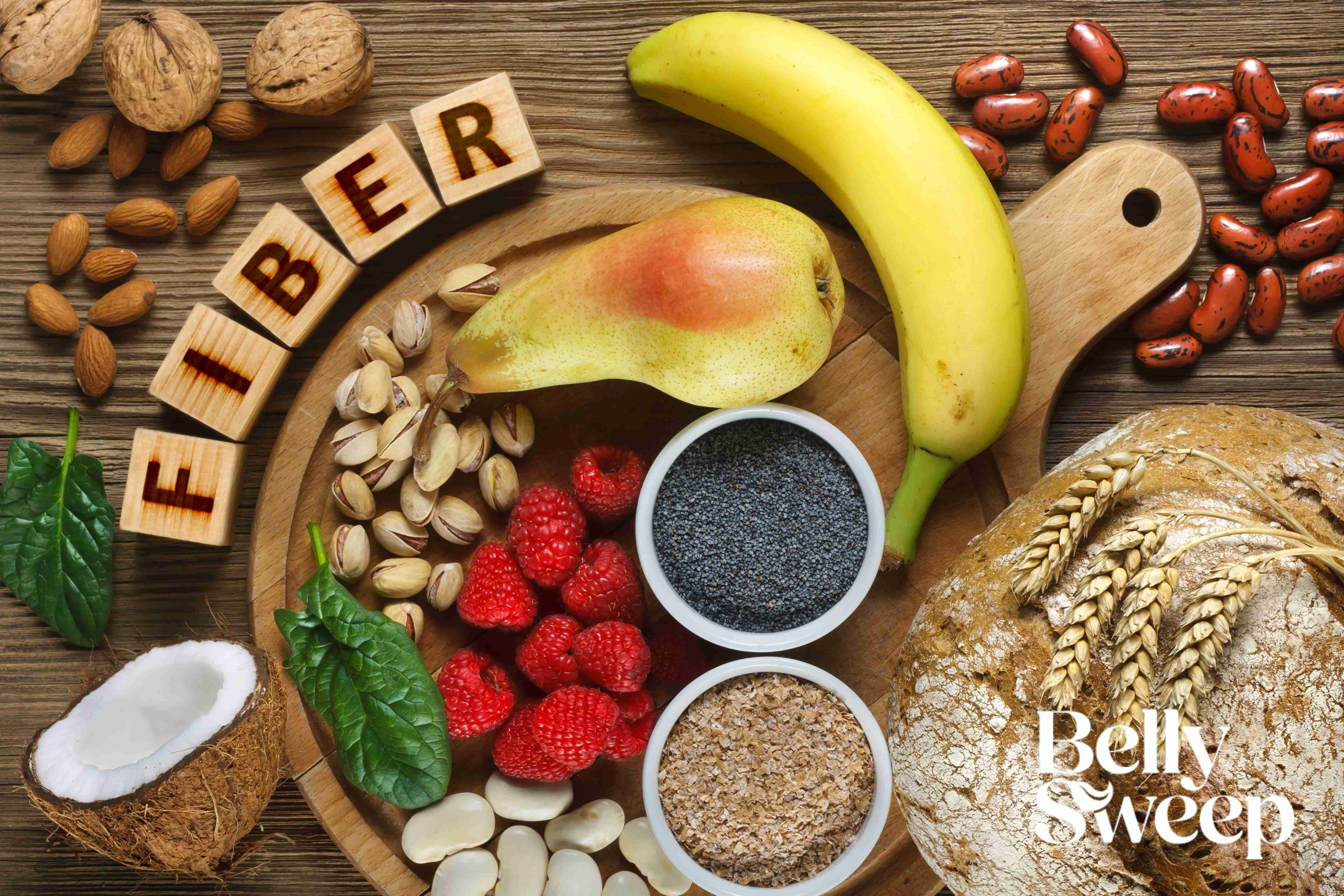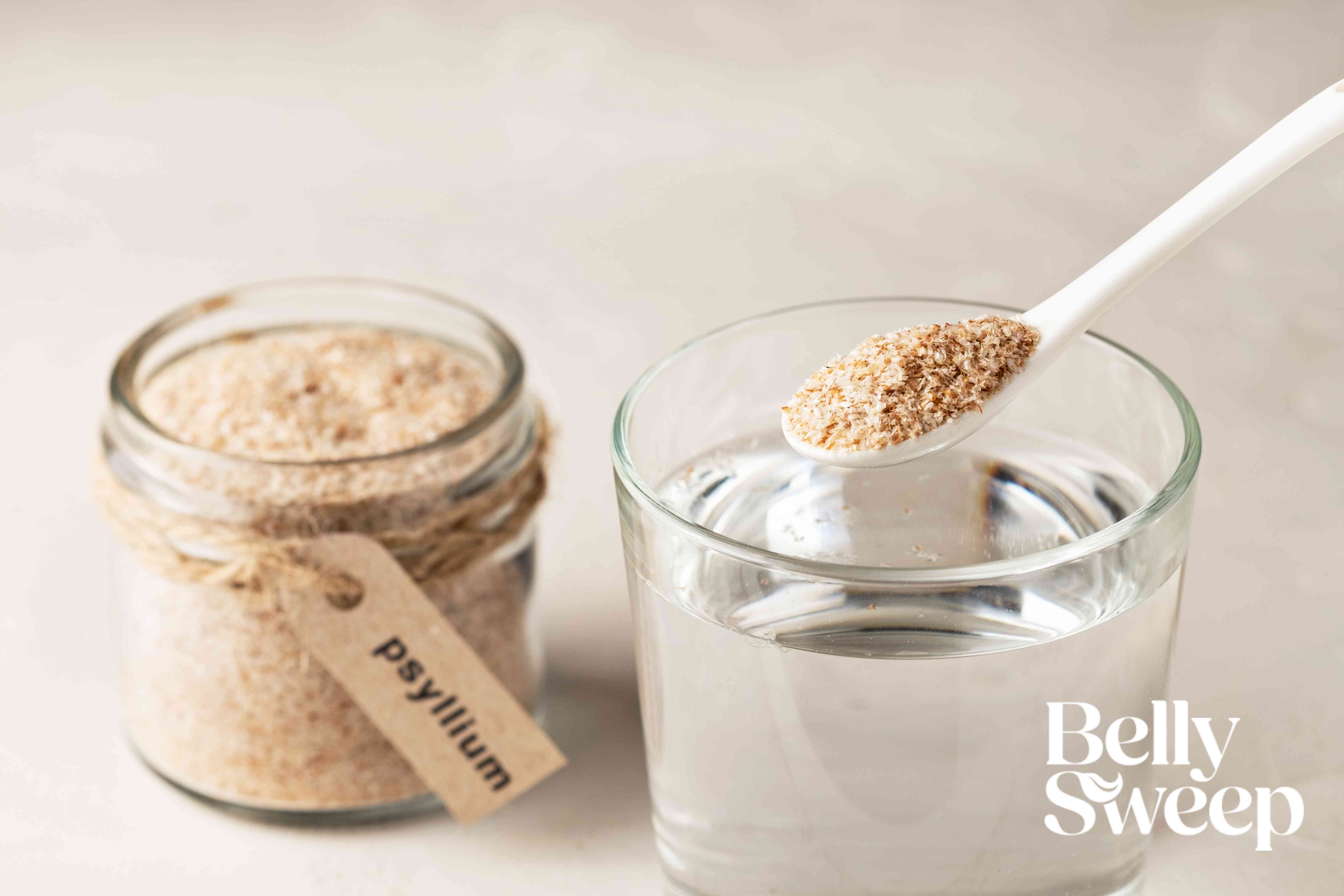How to Increase Your Fiber Intake – Practical Tips and Tricks

Want to know how to increase fiber intake the natural way? You’ve certainly come to the right place! The truth is that the modern diet of processed food and pre-made meals is lacking much of the natural goodness that the human body has evolved to need. One of the fundamental building blocks of a healthy body that is unwittingly stripped out of our diets is fiber.
Numerous scientific studies have shown that the correct level of fiber will help with everything from weight management and heart health to digestion and nutrient uptake. Without enough fiber in your diet, you’re just not going to be able to fuel your body the right way. That’s why we’re going to focus on how to increase fiber intake without having to radically change your diet or lifestyle. Let’s dive right in!
Quick Answer: The Easiest Ways to Increase Fiber
The quickest way to increase the amount of fiber in your body is to change your diet through a combination of thoughtful eating and fiber supplementation:
- Eating more fresh fruits and vegetables will give your body more fiber
- Changing industrially refined grains for whole grains will also make a difference
- Adding nuts, seeds, and legumes to your diet as garnishes or sides will help
Many people also choose a natural supplement such as BellySweep to help them meet their dietary fiber target. The advantage of supplementation is that you can increase your fiber intake without having to consume significantly more food. This is particularly important for those with smaller appetites or digestive issues.
Understanding Fiber
There’s a common misconception that all types of fiber are created equal — this couldn’t be further from the truth. The truth is that you can split fiber into two categories: soluble and insoluble fiber, and they each have a unique range of benefits. But before we dive into the finer points of this distinction, we need to think about what fiber is.
What is fiber?
Fiber is a long-chain organic material that occurs naturally in a wide variety of different plants that produce fruits and vegetables. The key point about fiber is that it is very good at resisting the digestive properties of the enzymes in your gut that are responsible for breaking down food and extracting nutrients. For this reason, you can think of fiber as a special workout for the gut that helps feed the healthy gut bacteria that you need to thrive.
Without the right amount of fiber, you can quickly develop a gut microbiome that is riddled with unhealthy bacteria that actively work against the body. Achieving the correct balance by taking in both soluble and insoluble fiber is of paramount importance when you want to be able to look and feel your best.
Soluble fiber benefits
Soluble fiber blends with water in the gut and is a safe and natural way to slow down the digestive process. While you may think that slower digestion leads to constipation, this is not the case if it is done the right way.
Studies have shown that soluble fiber supplementation will decrease the risk of heart disease and simultaneously reduce blood pressure by tackling harmful LDL cholesterol. Soluble fiber has also been shown to be a highly effective way to control blood sugar levels throughout the day by smoothing out the spikes and dips that can occur after eating a heavy meal.
You can find plenty of soluble fiber in seeds, legumes, and a wide variety of different root vegetables.
Insoluble fiber benefits
Insoluble fiber is a little different and is primarily used to soothe and combat chronic constipation. By drawing water into the gut and blending it with the stool, insoluble fiber acts as a natural gel that binds and grows the stool so that it can be more easily passed through the gut.
Whole-wheat flour, bran, and nuts are common sources of insoluble fiber. You can also find it in ample supply if you add cauliflower, green beans, and fresh potatoes to your diet.
By trying to get your insoluble fiber from as broad a mix of foods as possible, you will give your body a balanced diet that makes all the difference to your health and wellness.
Now that we’ve covered the basics and talked you through the fundamentals, we can take a closer look at the high-fiber foods you can add to your diet.
Top High-Fiber Foods to Add to Your Diet
While making changes to your diet can feel daunting, the key is to remember that you only have to make one change at a time. Living a healthier life is a marathon, not a sprint, and that means you can take your time so that you can build sustainable habits.
Trying to change everything at once may be tempting, but it runs the risk of overwhelming your body and making you feel like your diet has suddenly become overly restrictive. Take your time to establish 1-2 changes from the list below per week and you will find it so much easier to stick to your new routine.
Fruits
Adding a fresh piece of fruit to your daily intake is probably the easiest change to make on this list. Something as simple as swapping a bag of chips for an apple at lunchtime will give you plenty of extra fiber as well as some natural sweetness. Make sure you eat the skin, as that is where most of the fiber will be found.
Vegetables
Root vegetables are a great source of both types of fiber and can be used to bulk out any main meal in the evening or on the weekend. Trying to have as many different colors of vegetables on your plate as possible throughout the week will help you achieve a real sense of nutritional balance. While increasing your fiber intake through one type of veggie is certainly better than doing nothing, it’s also important to note that increasing your fiber intake isn’t the sole aim of healthy eating. Different colored vegetables offer different types of vitamins, minerals, and micronutrients, all of which your body needs to go from surviving to thriving.
Whole grains
Fiber is stripped out of our diets by industrial processing when it comes to mass-producing everyday staples like wraps and bread. The good news is that there are plenty of whole-grain alternatives that taste just as good and provide all the fiber you have been missing out on. Swapping the bread you have in the house is a simple change that won’t feel like you’re having to radically alter your diet.
Legumes
Legumes are essential beans and there are over 16,000 different varieties of them growing in the world. The great thing about this is that you will never be short of new ideas when you want to bulk out your main courses in the evening. Finding 2-3 different types of beans that are easy to prepare — and that the whole family likes to eat — will really help you take back control of your diet.
Nuts
All nuts are blessed with an ample supply of natural fiber, not to mention a whole host of healthy fatty oils that help with everything from brain function to joint health. Taking a small pot of nuts to work is a great way to swap out a sugary drink or chocolate bar with something that will do your body so much more good.
Seeds
Last but not least, try sprinkling a couple of spoonfuls of seeds onto your lunchtime salad or morning porridge, and you’ll really be optimizing your diet. Ideal when you want to be able to achieve a real sense of balance with the minimum of effort.
Practical Strategies for Gradually Increasing Fiber
Taking a moment to plan out how you’re going to make the changes your body needs can make all the difference. Here are our top tips on how to approach things so that you can make sustainable changes and experience long-term benefits.
Meal planning
Planning your meals for the week ahead may sound like quite a strict way of life, but it’s something that’s becoming increasingly popular for a very good reason. By eliminating the need to decide what you’re going to have each evening, you can remove a lot of the stress and mental load from healthy eating. Prep a few meals in bulk on the weekend, and you’ll always have something healthy to fall back on.
Healthy snacking
Swap soda and candy bars for nuts and fresh fruit, and you’ll be able to give your body a steady stream of fiber throughout the day. Plus, because you won’t be overloading yourself with sugar, you’ll find your energy levels are so much more stable and consistent.
Focus on the labels
Fibrous foods all have clear nutritional labels that tell you how much fiber you get per serving. With a little practice, you’ll become adept at reading the labels in the store so that you can always pick out the right food for your body.
The importance of hydration
Fiber intake is only as good as water intake, so make sure that you stay hydrated at all times. Drinking enough so that your urine is clear and odorless is the way to make sure you’re giving your body enough water to work its magic.
We should also say a few words about supplementing with fiber.
Fiber Supplements: Pros and Cons
Supplementation is a great approach used by millions of people because it allows you to fine-tune your fiber intake without having to add more food volume to your diet. The important point, however, is to make sure that you don’t consume excess fiber by adding one too many scoops to your morning shake or smoothie.
One of the most popular fiber supplements on the market is BellySweep and it is made using natural psyllium husk. This natural substance is a more effective supplement than methylcellulose and inulin and can be added to your diet without overloading your gut’s delicate natural balance.
FAQs
Why is fiber important for overall health?
Fiber improves digestive health, helps protect you against heart disease, and can even help you manage your weight without feeling like you’re going hungry.
How do I know if I’m not getting enough fiber?
If you are not getting enough fiber then you will probably suffer from constipation, low energy levels, or feel constantly hungry.
Can increasing fiber cause bloating or gas?
Yes, increasing your fiber intake too quickly can cause mild gas or bloating. If this occurs, reduce your fiber intake to the previous level for 1 week and then increase more gradually from there.
Final Thoughts
Now that we’ve covered everything you need to know about increasing your fiber intake, it’s over to you to start making the changes that will transform your life.
Committing to adding 1-2 new foods to your diet each week will help you build healthy, sustainable habits that are so much easier to stick to. You can also consider supplementing your fiber intake with BellySweep so that you don’t have to suddenly start consuming a lot of extra food.
Once your body is set up the right way, there are no limits to what you can achieve!
Resources
Slavin, J. L. (2008). “Dietary fiber and body weight.” Nutrition, 24(4), 353-358.
https://doi.org/10.1016/j.nut.2007.12.006
Anderson, J. W., Baird, P., Davis, R. H., Ferreri, S., Knudtson, M., Koraym, A., Waters, V., & Williams, C. L. (2009). “Health benefits of dietary fiber.” Nutrition Reviews, 67(4), 188-205.
https://doi.org/10.1111/j.1753-4887.2009.00189.x
Reynolds, A., Mann, J., Cummings, J., Winter, N., Mete, E., & Te Morenga, L. (2019). “Carbohydrate quality and human health: a series of systematic reviews and meta-analyses.” The Lancet, 393(10170), 434-445.
https://doi.org/10.1016/S0140-6736(18)31809-9
Lattimer, J. M., & Haub, M. D. (2010). “Effects of dietary fiber and its components on metabolic health.” Nutrients, 2(12), 1266-1289.
https://doi.org/10.3390/nu2121266
McRorie, J. W., & Chey, W. D. (2016). “Fermented vs. non-fermented fiber: Implications for gut health and the treatment of constipation.” Alimentary Pharmacology & Therapeutics, 43(8), 899-915.
https://doi.org/10.1111/apt.13543
Soliman, G. A. (2019). “Dietary fiber, atherosclerosis, and cardiovascular disease.” Nutrients, 11(5), 1155.
https://doi.org/10.3390/nu11051155
Vuksan, V., Jenkins, D. J. A., Spadafora, P., Sievenpiper, J. L., Owen, R., Vidgen, E., & Brighenti, F. (1999). “Konjac-Mannan and Psyllium: Emerging Alternative Viscous Fibers for Lowering Cholesterol and Controlling Diabetes.” Current Opinion in Lipidology, 10(6), 563-571.
https://doi.org/10.1097/00041433-199912000-00003
Eswaran, S., Muir, J., & Chey, W. D. (2013). “Fiber and functional gastrointestinal disorders.” American Journal of Gastroenterology, 108(5), 718-727.
https://doi.org/10.1038/ajg.2013.63
Maki, K. C., Carson, M. L., Miller, M. P., Turowski, M., Bell, M., Wilder, D. M., Rains, T. M., & Reeves, M. S. (2008). “High-molecular-weight hydroxypropylmethylcellulose blunts postprandial glycemia in individuals with type 2 diabetes mellitus.” Journal of Nutrition, 138(1), 139-143.
https://doi.org/10.1093/jn/138.1.139
Marlett, J. A., McBurney, M. I., & Slavin, J. L. (2002). “Position of the American Dietetic Association: Health implications of dietary fiber.” Journal of the American Dietetic Association, 102(7), 993-1000.
https://doi.org/10.1016/S0002-8223(02)90228-2








